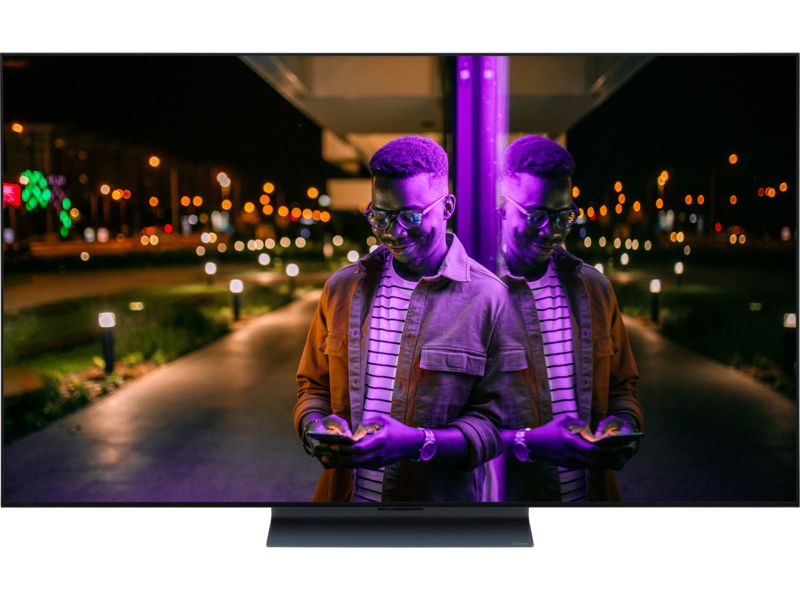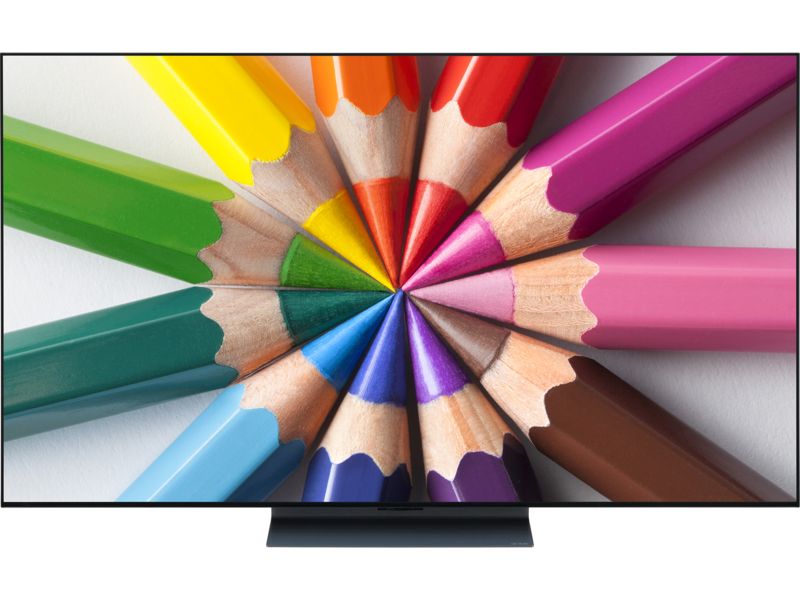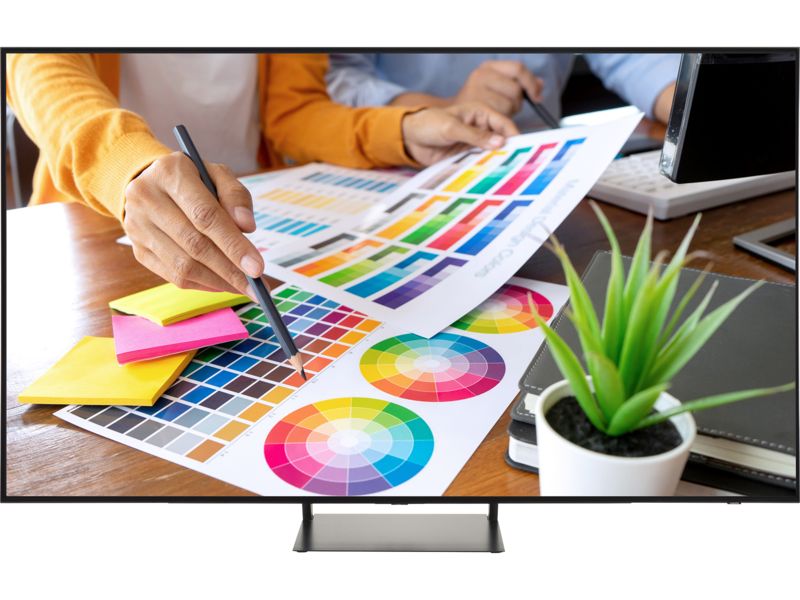By clicking a retailer link you consent to third-party cookies that track your onward journey. If you make a purchase, Which? will receive an affiliate commission, which supports our mission to be the UK's consumer champion.
The best TVs for people who are blind or partially sighted

Most TVs have some accessibility features, but unless you're willing to delve into the manual before making a purchase, it's not always clear what features a TV has and how well they work.
To find out which TVs are easiest to use and watch for people with sight issues, we developed an accessibility test in partnership with the Royal National Institute of Blind People (RNIB).
The new test looks at everything from how efficiently the screen reader tells you important information on different menus, to whether you can choose which part of the screen gets magnified – and everything in between.
In this guide we'll explain the different features available to people who are blind or partially sighted and showcase the TVs that use these features best.
Best TV deals – each month we reveal the TVs with the best price reductions
How we rate accessibility on TVs
Regardless of any extra requirements you might have for your TV, some things are fundamental to our test: picture quality, sound quality and how simple a TV is to use.
To get a Best Buy score from us, a TV needs to get those three things right, but it doesn't need to have a wealth of effective accessibility features.
Each test we perform on a TV will account for a portion of its score. More important features, such as picture and sound quality, account for a greater portion of the overall score than something less important, such as how good the PVR is at recording.
Rather than try and determine which accessibility features are more important than others, we decided not to factor them into the score at all. However, we still test these features. Functions such as the screen reader, menu contrast and how easy it is to use the remote with touch alone have star ratings, just like picture and sound quality do, but they don't impact the score.
Instead, you can use the accessibility filters on our reviews to select the features you need from your TV and narrow your search to only include TVs with at least four-star ratings for the features that are important to you.
If you don't need screen magnification, but an excellent screen reader is vital for you to use your TV easily, then the filters will enable you to find the TV that best suits your needs.
The reviews go into more detail, too. The tech spec and test result section explain more about what accessibility features each model has and how well they're implemented. There's also a whole accessibility section in the written portion of each review under the heading 'How are the accessibility features?'
Use the accessibility filters in our TV reviews to see the TVs that will work best for you
The best TVs for people who are blind or partially sighted
What accessibility features are vital will be different for everyone. So, when choosing the best overall TVs for people who are blind or partially sighted, we selected models that had the most features and the highest ratings across the many accessibility tests we perform.
To put it simply, they tick the most boxes and they tick them emphatically.
Of the TVs we've tested in 2023, Samsung is the gold standard when it comes to accessibility features, but its smaller TVs struggle overall compared to LG TVs, which is why we've featured some LG TVs here, too.
LG has good accessibility features, as does Sony (which we've also featured), but both have room for improvement.
Hisense, Philips, Panasonic and TCL's 2022 TVs do not have strong enough accessibility features and should be avoided, but we hope to see improvements when we test their 2023 models.
Samsung QE65Q80C

- Price: £1,145
- Screen type: QLED
- Screen size: 65 inches
Samsung goes further than any other brand when it comes to accessibility. Only LG and Sony come close, but Samsung has more features and implements them better.
The screen reader provides plenty of information, and delivers it in an order than makes sense and doesn't waste your time. There are plenty of options to adjust speed and volume.
It's the only brand to offer partial screen magnification, so you can zoom into parts of the screen for a better look. You can change the size of text in some menus, too.
There are also plenty of colour options to help you read and see things clearly on the screen. Our only real issue is with the remote, which is tricky to use by touch alone.
The QE65QN85B is fantastic. It's not quite top of the line, but few other Samsung TVs beat it (including some that cost more). The sound is sublime and evocative, with real width for a room-filling experience.
You can read about all our accessibility tests, and get more detail on the using the TV and its picture quality in our Samsung QE65Q80C review.
Samsung QE55S90C

- Price: £1,399
- Screen type: QDOLED
- Screen size: 55 inches
We were really impressed with the accessibility features on all 4K Samsung TVs released in 2023.
The QE55S90C's screen reader is detailed and accurate without being overwhelming, and there are plenty of options to customise it.
It's the only brand to offer partial screen magnification and it's the most well-rounded suite of accessibility options we've seen. There are plenty of colour options, too such as inverted colours and greyscale.
In addition to its brilliant accessibility features, the QE55S90C is an excellent TV. It uses a QDOLED screen, which combines backlit technology with an OLED screen for astonishing picture quality.
Breathtaking sound is the icing on the cake for this sublime TV.
The only thing to watch out for is the remote. It's not the easiest to use with touch alone, but otherwise this is one of the best TVs for people with sight problems.
To see the full list of accessibility features and read about them in more detail, head to our Samsung QE55S0C review.
If you'd like a bigger TV you could also consider the 65-inch version. It's every bit as good and has the same accessibility features. Read our Samsung QE65S90C review for more information.
LG OLED48A26LA

- Price: £649
- Screen type: OLED
- Screen size: 48 inches
Samsung is the gold standard when it comes to accessibility, but LG isn't too far behind and its smaller TVs are some of the best around when it comes to picture and sound quality.
The screen reader is decent, but some improvements could be made when it comes to the order that information is read out. It's not as logical as we'd like, but it's still OK.
You get good colour options too, such as greyscale and inverted colour schemes. You can adjust the volume and speed of the screen reader, but there's no way to magnify the screen or increase the size of the text.
LG's Magic Remote is one of the best for touch alone. The buttons are intuitively placed and easy to differentiate.
The 48-inch OLED48A26LA is one of LG's cheapest OLEDs. It's not a budget TV, we know, but it costs several hundred pounds less than a typical OLED model. We were impressed with the clarity of the image and the atmospheric sound.
Learn more about the accessibility features on this TV, including a full list of the options available, in our LG OLED48A26LA review.
Sony XR-65A80L

- Score: 72% Best Buy
- Price: £1,999
- Screen type: OLED
- Screen size: 65 inches
Sony's top-tier OLED TV for 2023 is expensive, but special. The screen vibrates to create sound, which gives a wonderful sense of space and atmosphere. Sounds come from different points on the screen, such as a character's mouth or a car engine, and these specific touches are absorbing.
Sony is one of the better manufacturers when it comes to accessibility, although, like LG, it lags behind Samsung.
The screen reader is excellent. You have plenty of options to control speed and volume, and the order of information is fantastic, so it won't waste your time with extraneous details.
It's one of the few brands where you can enlarge text, but some other features are lacking. Unfortunately, there are no colour options, such as greyscale or inverted colour scheme.
Sony's entry-level ranges don't have screen readers, so be wary of that – our reviews detail whether there is one and you can filter TVs to remove models that don't have a screen reader.
To read more about the TV and its accessibility features see our Sony XR-65A80L review.
What accessibility features are available on TVs and how do we test them?
Screen reader
The screen reader is vital for explaining what's on each screen, including during setup. It can also explain the settings menus, the smart home screen and the electronic program guide (EPG).
Our test notes whether you can change volume, speed and what menus the screen reader is available on.
We also test to see how logically information is read out. For example, if a TV reads out the entire synopsis of a film before explaining if audio description is available then we'll mark it down.
Screen magnification
We check to see if the entire screen can be magnified and if a fixed area can be magnified to enlarge a portion of the screen while scrolling.
We also look at whether the user can choose a part of the screen to be magnified.
As well as noting the presence of a screen magnifier, we check whether text can be enlarged.
Menu contrast
We rate the contrast on the different menus of the TV, such as the EPG, settings and smart menu.
If our experts feel it's too difficult to read text or see parts of the page because the contrast is too high or too low, and they're unable to adjust it, then we won't rate it very highly.
Using the remote
This test rates how well the remote can be used with touch alone. We also determine how easy the iconography and button labelling is to read and whether there are tactile markings on the buttons.
How to hear your TV better – tips and technology to help you hear the most hushed dialogue
Additional checks
As well as testing certain features, we also note any others that are included and check to see if additional options are available, such as:
- Greyscale
- Inverted colour options
- Light text on a dark background option
- Dark text on a light background option
- Turn on audio description by default
- Turn on subtitles by default
- Change location of subtitles panel
- Change size of sign language window
- Accessible TV manual with screen reader available
- Accessible remote manual with screen reader available
- Shortcut to control subtitles on the remote
- Voice control option to access accessibility features



